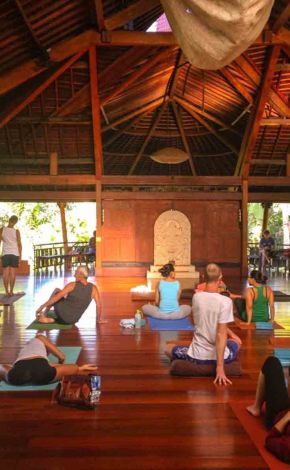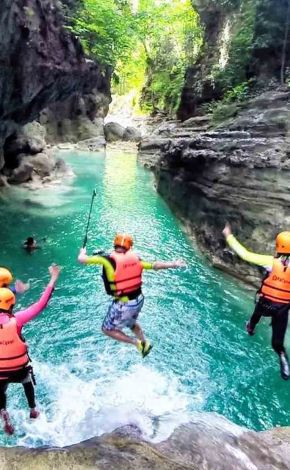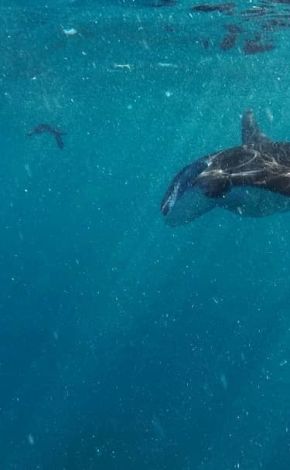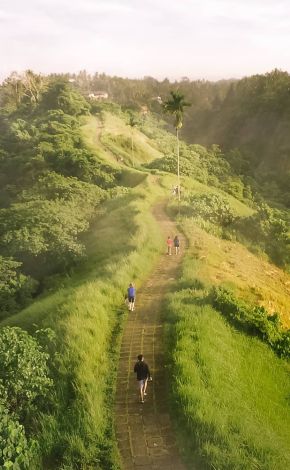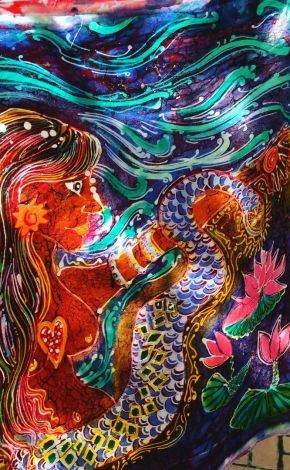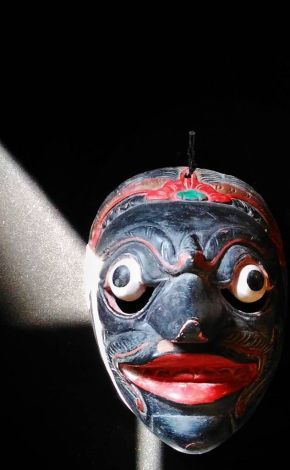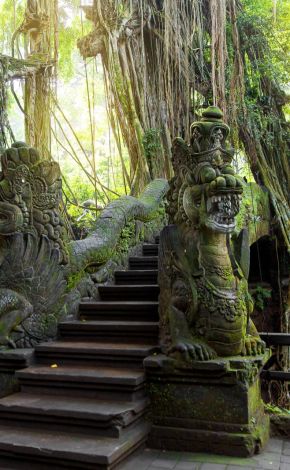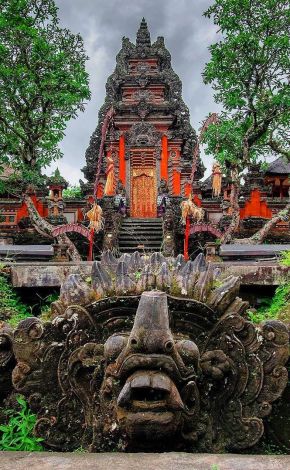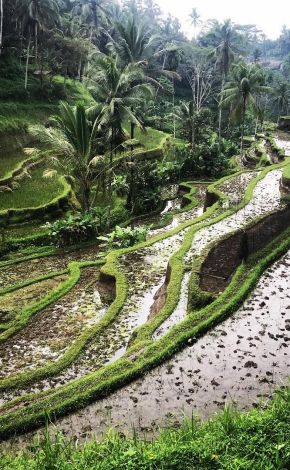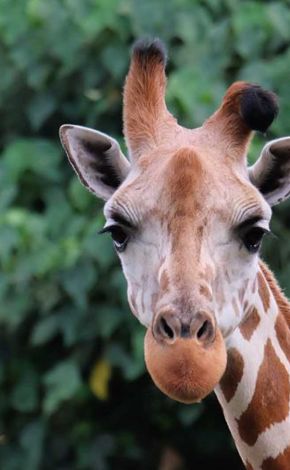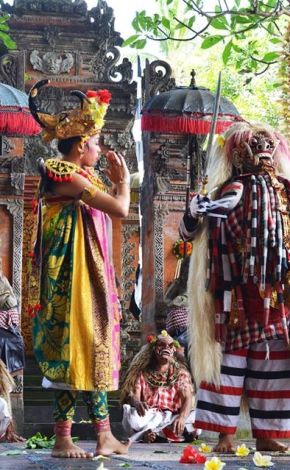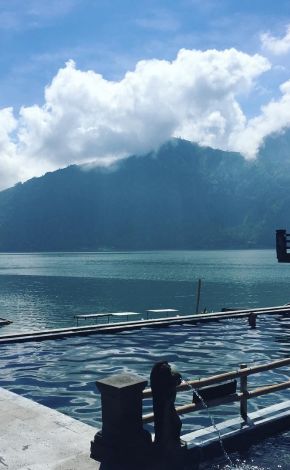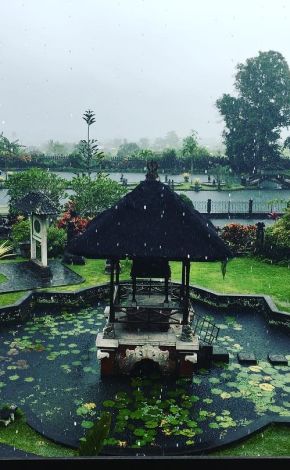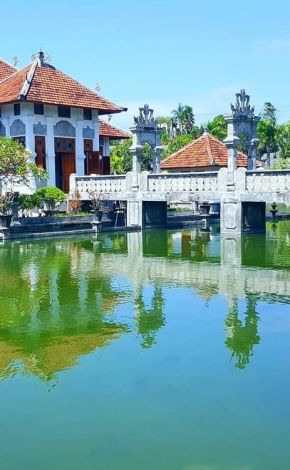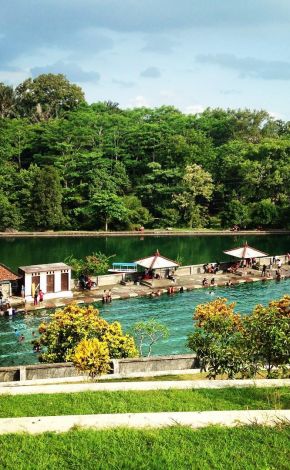Uniqueness of this attraction
Uniqueness of this attraction
Located 26 kilometers away from Denpasar city and 15 minutes away from central Ubud, Goa Gajah is literally translated as Elephant Cave. Listed as a UNESCO World Heritage, Goa Gajah Temple is an ancient monastery that is worth discovering for anyone who seeks for peaceful sightseeing. Interestingly, there are even mentions of the sacred place in the Javanese poem Desawarnana, a masterpiece that was written in 1365.
Goa Gajah a heritage landmark in Bali which has now become a sanctuary for Buddhist monks and Shivite priests. The Elephant Cave Temple was built on a hill where two rivers met, forming a naturally beautiful river junction. Currently, the temple is still being utilised by the locals and visitors as a place for prayers and enclosed meditation.
The first and maybe the most important reason to visit Goa Gajah is for admiring the huge entrance to the cave which depicts a giant face whose wide open mouth forms the doorway. While there are various statues of animals and legendary characters in the Elephant Cave Temple, visitors may also be curious about the black lines that mark the cave’s walls. However, despite their mysterious appearance they are actually the result of incense burning.Those with a keen eye will be able to spot a number of indentations which were used as places for meditation. Visitors can also complete the visit of the area by taking a walk in the forest of Goa Gajah to see natural lakes and a waterfall.
Goa Gajah a heritage landmark in Bali which has now become a sanctuary for Buddhist monks and Shivite priests. The Elephant Cave Temple was built on a hill where two rivers met, forming a naturally beautiful river junction. Currently, the temple is still being utilised by the locals and visitors as a place for prayers and enclosed meditation.
The first and maybe the most important reason to visit Goa Gajah is for admiring the huge entrance to the cave which depicts a giant face whose wide open mouth forms the doorway. While there are various statues of animals and legendary characters in the Elephant Cave Temple, visitors may also be curious about the black lines that mark the cave’s walls. However, despite their mysterious appearance they are actually the result of incense burning.Those with a keen eye will be able to spot a number of indentations which were used as places for meditation. Visitors can also complete the visit of the area by taking a walk in the forest of Goa Gajah to see natural lakes and a waterfall.
Other things to do here?
Other things to do here?
Should you get hungry after your trip here, make your way to nearby Bale Udang Ubud restaurant for a peaceful dining experience overlooking beautiful ponds. It is famous for their Indonesian cuisine and seafood dishes.
What to bring home?
What to bring home?
A sarong is the ultimate souvenir a tourist can buy from one of the gift shops in Goa Gajah aside from the books, miniatures or postcards representing the temple.
Who should I travel with?
Who should I travel with?
Solo , Friends , Family , Group
Getting around
Getting around
It is located in the Bedulu Village, along Jl. Raya Goa Gajah.From Ubud central, it takes a 15 minute drive to get to Goa Gajah and you can get a taxi. If you are from Kuta, the best way to reach the place is by renting a car and driver to guide you visiting other places nearby in Ubud. Alternatively, if you stay in Ubud, you can get here by your rental motorcycle with guide of your GPS.
Insiders’ tips
Insiders’ tips
- Be mindful of the local worshippers praying in the area as the path inside the cave can be narrow.
- Tourists should wear scarf and sarong provided at the entrance upon entering the temple area.
- Women during periods are not allowed to enter as the Goa Gajah or Elephant Cave Temple as it is a sacred place.
- Enquire with the locals or tour operators to visit Goa Gajah during the celebration for the temple anniversary. The dates are based on Balinese Pawukon calendar.
- Art stalls, souvenir shop and stalls to get refreshment are available within the area.
- Bringing a torchlight would also come in handy as the paths in the cave might be dark at times.
- Parking space is provided within the area if you are driving here.
The archaeological site of Goa Gajah originated in the 11th century and it still is a peaceful place for meditation as well as exploring the Hindu tradition.

Opening hours
| Monday | 08:00 am to 04:30 pm |
| Tuesday | 08:00 am to 04:30 pm |
| Wednesday | 08:00 am to 04:30 pm |
| Thursday | 08:00 am to 04:30 pm |
| Friday | 08:00 am to 04:30 pm |
| Saturday | 08:00 am to 04:30 pm |
| Sunday | 08:00 am to 04:30 pm |
The archaeological site of Goa Gajah originated in the 11th century and it still is a peaceful place for meditation as well as exploring the Hindu tradition.

Opening hours
| Monday | 08:00 am to 04:30 pm |
| Tuesday | 08:00 am to 04:30 pm |
| Wednesday | 08:00 am to 04:30 pm |
| Thursday | 08:00 am to 04:30 pm |
| Friday | 08:00 am to 04:30 pm |
| Saturday | 08:00 am to 04:30 pm |
| Sunday | 08:00 am to 04:30 pm |
Uniqueness of this attraction
Uniqueness of this attraction
Located 26 kilometers away from Denpasar city and 15 minutes away from central Ubud, Goa Gajah is literally translated as Elephant Cave. Listed as a UNESCO World Heritage, Goa Gajah Temple is an ancient monastery that is worth discovering for anyone who seeks for peaceful sightseeing. Interestingly, there are even mentions of the sacred place in the Javanese poem Desawarnana, a masterpiece that was written in 1365.
Goa Gajah a heritage landmark in Bali which has now become a sanctuary for Buddhist monks and Shivite priests. The Elephant Cave Temple was built on a hill where two rivers met, forming a naturally beautiful river junction. Currently, the temple is still being utilised by the locals and visitors as a place for prayers and enclosed meditation.
The first and maybe the most important reason to visit Goa Gajah is for admiring the huge entrance to the cave which depicts a giant face whose wide open mouth forms the doorway. While there are various statues of animals and legendary characters in the Elephant Cave Temple, visitors may also be curious about the black lines that mark the cave’s walls. However, despite their mysterious appearance they are actually the result of incense burning.Those with a keen eye will be able to spot a number of indentations which were used as places for meditation. Visitors can also complete the visit of the area by taking a walk in the forest of Goa Gajah to see natural lakes and a waterfall.
Goa Gajah a heritage landmark in Bali which has now become a sanctuary for Buddhist monks and Shivite priests. The Elephant Cave Temple was built on a hill where two rivers met, forming a naturally beautiful river junction. Currently, the temple is still being utilised by the locals and visitors as a place for prayers and enclosed meditation.
The first and maybe the most important reason to visit Goa Gajah is for admiring the huge entrance to the cave which depicts a giant face whose wide open mouth forms the doorway. While there are various statues of animals and legendary characters in the Elephant Cave Temple, visitors may also be curious about the black lines that mark the cave’s walls. However, despite their mysterious appearance they are actually the result of incense burning.Those with a keen eye will be able to spot a number of indentations which were used as places for meditation. Visitors can also complete the visit of the area by taking a walk in the forest of Goa Gajah to see natural lakes and a waterfall.
Other things to do here?
Other things to do here?
Should you get hungry after your trip here, make your way to nearby Bale Udang Ubud restaurant for a peaceful dining experience overlooking beautiful ponds. It is famous for their Indonesian cuisine and seafood dishes.
What to bring home?
What to bring home?
A sarong is the ultimate souvenir a tourist can buy from one of the gift shops in Goa Gajah aside from the books, miniatures or postcards representing the temple.
Who should I travel with?
Who should I travel with?
Solo , Friends , Family , Group
Getting around
Getting around
It is located in the Bedulu Village, along Jl. Raya Goa Gajah.From Ubud central, it takes a 15 minute drive to get to Goa Gajah and you can get a taxi. If you are from Kuta, the best way to reach the place is by renting a car and driver to guide you visiting other places nearby in Ubud. Alternatively, if you stay in Ubud, you can get here by your rental motorcycle with guide of your GPS.
Insiders’ tips
Insiders’ tips
- Be mindful of the local worshippers praying in the area as the path inside the cave can be narrow.
- Tourists should wear scarf and sarong provided at the entrance upon entering the temple area.
- Women during periods are not allowed to enter as the Goa Gajah or Elephant Cave Temple as it is a sacred place.
- Enquire with the locals or tour operators to visit Goa Gajah during the celebration for the temple anniversary. The dates are based on Balinese Pawukon calendar.
- Art stalls, souvenir shop and stalls to get refreshment are available within the area.
- Bringing a torchlight would also come in handy as the paths in the cave might be dark at times.
- Parking space is provided within the area if you are driving here.


